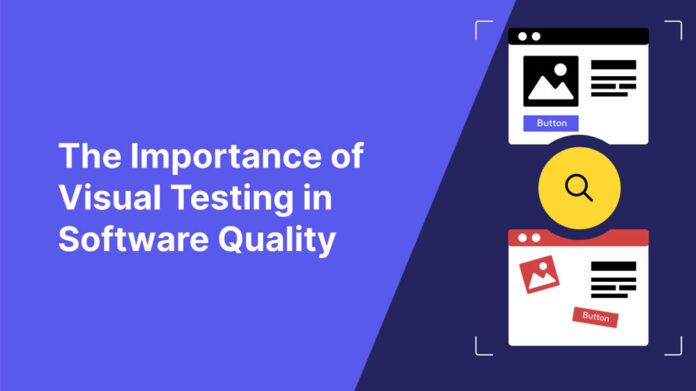Table of Contents
In the fast-paced world of software development, quality assurance is critical to delivering dependable and high-performing products. Visual testing has developed as a critical component of the testing process among the numerous testing approaches. Visual testing involves evaluating a software application’s visual appearance and layout to ensure that it meets the intended design and user experience. This article explores the significance of Visual testing in today’s technology-driven landscape and explains why it is an essential part of the software testing process.
Understanding Visual Testing
Visual testing is a software testing technique examining how an application’s graphical user interface (GUI) appears to end-users. Traditional testing methods mainly concentrate on functional aspects, ensuring the application behaves correctly and meets specified requirements. However, these methods may not catch discrepancies that are purely visual, such as misaligned elements, broken layouts, or graphical glitches.
Visual testing involves comparing expected visual results with the actual visual output produced by the application. Testers use specialized tools that capture screenshots or record video playback during the test execution. These screenshots or recordings are then compared to reference images representing the expected visual appearance of the application. Any deviations between the actual and expected visuals are identified and reported as potential defects.
The Importance of Visual Testing
Enhanced User Experience:
In today’s competitive market, user experience (UX) is a critical factor that can make or break an application. Users tend to abandon applications with poor visual design, confusing layouts, or inconsistent branding. Visual testing makes sure that the GUI is visually appealing, user-friendly, and the same across different devices and platforms.
Cross-Browser and Cross-Device Compatibility:
Modern applications need to function seamlessly on a wide range of browsers and devices, each with unique configurations and screen sizes. Visual testing ensures that the application looks and behaves consistently across various environments. It helps catch issues arising from differences in rendering engines or screen resolutions, allowing developers to optimize the application for a diverse user base.
Regression Testing Simplified:
Software development is an iterative process, and changes are frequently introduced during each release. With Visual testing, developers can easily detect unintended visual defects caused by code changes. Instead of manually testing the entire application after each modification, visual testing tools can automatically identify visual regressions and focus efforts on addressing specific issues.
Faster Bug Detection:
Visual testing provides a faster feedback loop in comparison to manual testing. It can scan through many visual elements in a short time, making it highly efficient for identifying visual discrepancies. Rapid bug detection leads to quicker bug fixes, reducing development costs and speeding up the overall release cycle.
Increased Test Coverage:
Traditional testing methods may not cover every visual aspect of an application due to time and resource constraints. Visual testing, however, ensures comprehensive test coverage, addressing even the smallest visual details that could impact the user experience. This improves application quality and reduces the risk of unexpected visual defects surfacing in production.
Conclusion
In conclusion, visual testing has become an indispensable part of the software testing process. It ensures that applications not only function correctly but also look visually appealing and provide an optimal user experience. By catching visual defects early in the development lifecycle, visual testing enables developers to create polished, user-friendly, and consistent applications. Now you know what is visual testing, it is the key to delivering visually flawless applications that delight users and drive business success.








![How to Fake Location on Snapchat Map in 2024 [Ultimate Guide] Fake Location on Snapchat](https://techenworld.com/wp-content/uploads/2024/02/Fake-Location-on-Snapchat-80x60.jpg)






